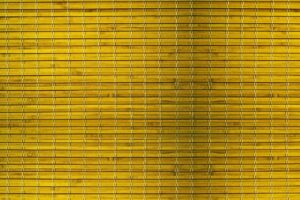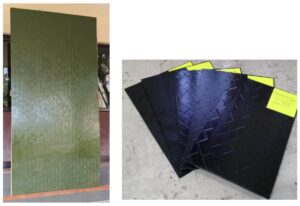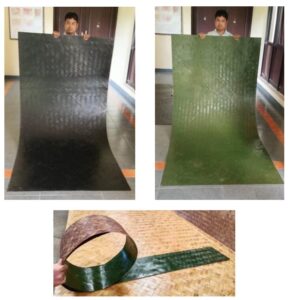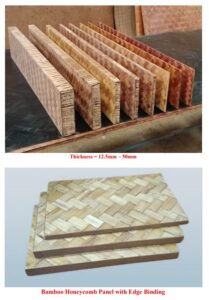A Detailed Comparison and Guide for Food-Grade Use
As the world turns toward more sustainable and eco-friendly energy sources, bamboo is increasingly gaining popularity as a biomass fuel. Two of the most common forms in which bamboo is processed for fuel use are bamboo briquettes and bamboo pellets. Both serve as effective alternatives to fossil fuels and traditional wood fuel, but they have unique characteristics, uses, and benefits. In this blog post, we’ll compare bamboo briquettes and bamboo pellets in detail—including how each fares for food-grade applications and how to prepare them for cooking or grilling.
What Are Bamboo Briquettes?
Bamboo briquettes are cylindrical or rectangular blocks made by compressing bamboo powder or sawdust under high pressure. They usually don’t require binders because the natural lignin in bamboo acts as a binder when exposed to heat during the briquetting process.
Key Features:
- Size & Shape: Larger than pellets, typically 5–10 cm in diameter.
- Energy Density: Higher than raw bamboo due to compaction.
- Burning Time: Longer burn time, slower ignition.
- Applications: Ideal for home heating, open fireplaces, barbecuing, and industrial heating.
What Are Bamboo Pellets?
Bamboo pellets are small, cylindrical pieces (usually around 6–10 mm in diameter and 10–30 mm long) made by compressing finely ground bamboo particles. Like briquettes, they often don’t require external binders thanks to lignin.
Key Features:
- Size & Shape: Small and uniform.
- Energy Density: High, but slightly less than briquettes per unit due to size.
- Burning Time: Fast ignition and shorter burn time.
- Applications: Commonly used in pellet stoves, boilers, and some small-scale cooking devices.
Bamboo Briquettes vs Bamboo Pellets: A Side-by-Side Comparison
| Feature | Bamboo Briquettes | Bamboo Pellets |
|---|---|---|
| Size | Large (blocks/cylinders) | Small (uniform pellets) |
| Burning Time | Long, slow burn | Quick ignition, shorter burn |
| Energy Density | Slightly higher | High |
| Ash Content | Low to medium | Low |
| Storage | Requires more space | Easier to store and transport |
| Application | Open fires, BBQ, industrial | Pellet stoves, boilers, cooking |
| Production Equipment | Briquetting press | Pellet mill |
| Price | Slightly higher due to size | More cost-effective in bulk |
Which Is Better for Food-Grade Use?
When using bamboo biomass for cooking or grilling, safety and purity become the top concerns. Here’s how both compare:
Bamboo Briquettes for Food-Grade Use
✅ Better for grilling and open flame cooking
✅ Burn longer, offering stable heat for BBQ
✅ Minimal smoke if properly carbonized
✅ Easier to handle for charcoal-based grills
⚠️ Caution: Ensure the briquettes are free from chemical binders and properly carbonized (charcoal briquettes) to avoid releasing harmful fumes.
Bamboo Pellets for Food-Grade Use
✅ Ideal for pellet smokers and modern grills
✅ Fast ignition and consistent heat
✅ Efficient combustion with low ash production
⚠️ Caution: Due to the small size, they’re not ideal for open fire or traditional grills. Must be used in approved pellet cooking appliances only.
Verdict:
Bamboo briquettes (charcoal form) are typically better for open-fire grilling, barbecues, and traditional food prep methods. Bamboo pellets shine in automated pellet grills and smokers, offering convenience and clean burning, but they’re less versatile for open flame cooking.
How to Prepare Food-Grade Bamboo Briquettes and Pellets
Step-by-Step: Food-Grade Bamboo Briquettes
1. Raw Material Collection Use clean, untreated bamboo—preferably from organically grown sources.
2. Carbonization
- Use a kiln to convert bamboo into charcoal.
- Aim for 400–600°C to carbonize without ash residue.
3. Crushing and Sieving
- Crush the charcoal into fine powder.
- Sieve to ensure uniform size.
4. Briquetting (Without Binders)
- Use a briquetting press.
- No chemicals—rely on heat and pressure for binding.
5. Curing and Drying
- Dry in the sun or in a low-temp oven until moisture is below 10%.
6. Storage
- Store in airtight, food-safe containers to avoid contamination.
Step-by-Step: Food-Grade Bamboo Pellets
1. Raw Material Collection Select clean, pesticide-free bamboo.
2. Chipping and Drying
- Chip bamboo into small pieces.
- Dry to around 10–12% moisture content.
3. Grinding to Powder
- Use a hammer mill or grinder to make fine powder.
4. Pelletizing (No Binders)
- Use a pellet mill; friction and heat will naturally bind particles.
- Temperature should remain below 150°C to avoid tar formation.
5. Cooling and Screening
- Cool pellets with ambient air.
- Screen out broken or malformed pieces.
6. Storage
- Store in dry, sealed containers to maintain quality and avoid mold.
Final Thoughts
Both bamboo briquettes and bamboo pellets offer sustainable, clean-burning options for cooking and heating. For food-grade use:
- Choose bamboo charcoal briquettes for grilling and open-fire cooking.
- Opt for pellets only in approved pellet smokers or stoves.
Whichever you choose, ensure they are free from additives, binders, or chemicals, and properly processed and stored to keep them safe for cooking.
Bonus Tip:
If you’re not making them yourself, always look for certifications like FDA approval, ISO 22000, or NSF certification for food-grade biomass fuels when buying bamboo briquettes or pellets for cooking.





